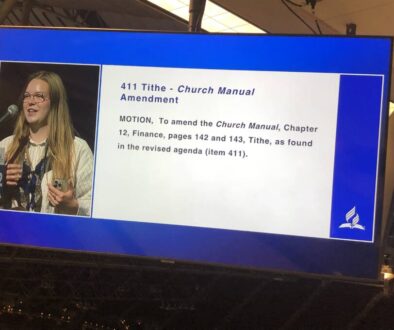Adventist Journal Backs Out of Deal Made with Readers in 1972
By AT News Team, June 2, 2015: The flagship periodical published by the Seventh-day Adventist denomination has informed readers who purchased a lifetime subscription in 1972 that it will no longer honor the deal. The Adventist Review (AR) Gold Seal Program offered subscribers who made a one-time payment of $350 the promise of receiving the magazine the rest of their lives at no additional cost.
Those who are still living received a letter in May informing them that AR can no longer afford to honor the promise that was made to them 43 years ago. The letter said that the “healthy and vibrant publishing house we knew back then is now out of business.” The Review and Herald Publishing Association was closed down last year essentially bankrupt.
“Thankfully,” the letter continued, “Adventist Review is not going away … You can still receive your favorite magazine.” But the promised life-time subscription can’t continue. Instead, AR “would like to return to you the $350 deposit you made back then, minus $19.95, a “special promotional subscription price … to let you to continue enjoying it for one more year.”
The letter also made a fund raising appeal. “Having benefited from the magazine for all these years, you may want to give back a little, so that others may benefit just as you did, at least for one year. If so, we will gladly put [the $350] to work on your behalf for our New Believers Program, which allows us to make a subscription available for one year to any recently baptized individual, absolutely free of charge … As a way of saying ‘thank you’ for partnering with us on this program, we would then continue to send you the magazine, free of charge, for one more year.”
The response card enclosed with the letter stated that should the Gold Seal Program participant not return the card by June 30, it would be assumed that they would like to put their money into “the New Believers Program and to keep the magazine coming to your mail box for one more year!” They would receive a “donation receipt for $350,” the card said. If a Gold Seal Program participant decided “to pass up this offer and elect to receive the full $350 instead” their subscription will be canceled.
The equivalent of $350 in 1972 would be about $2,000 in 2015 dollars, a source told Adventist Today. The original concept of the Gold Seal Program was that the $350 would be deposited in an interest-bearing account and out of the interest, the cost for the subscription would paid “year in and year out, as long as the subscriber lived.” There are 100 individuals in the program still living.
“These are all senior citizens,” another source told Adventist Today. “They are long-time, loyal members of the denomination. A number were denominational employees. They are the kind of people who have read the Review every week for as long as they can remember.”



